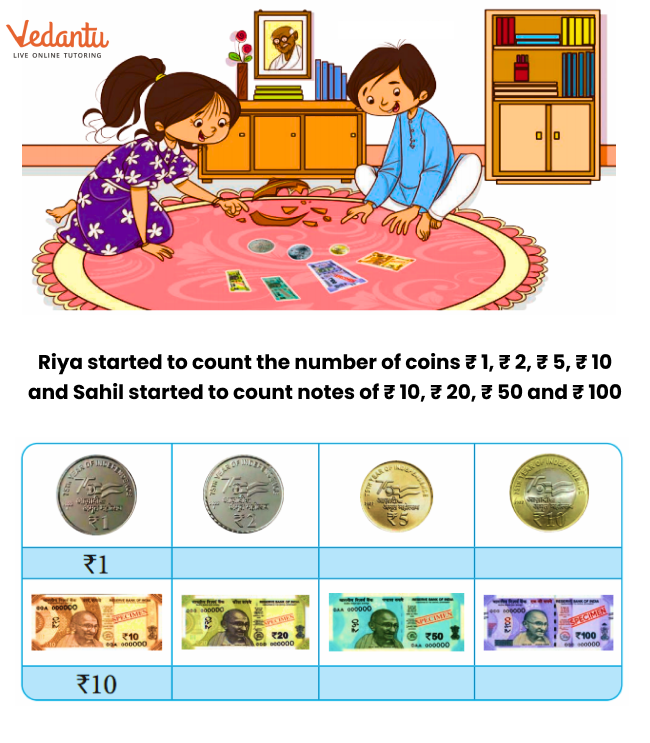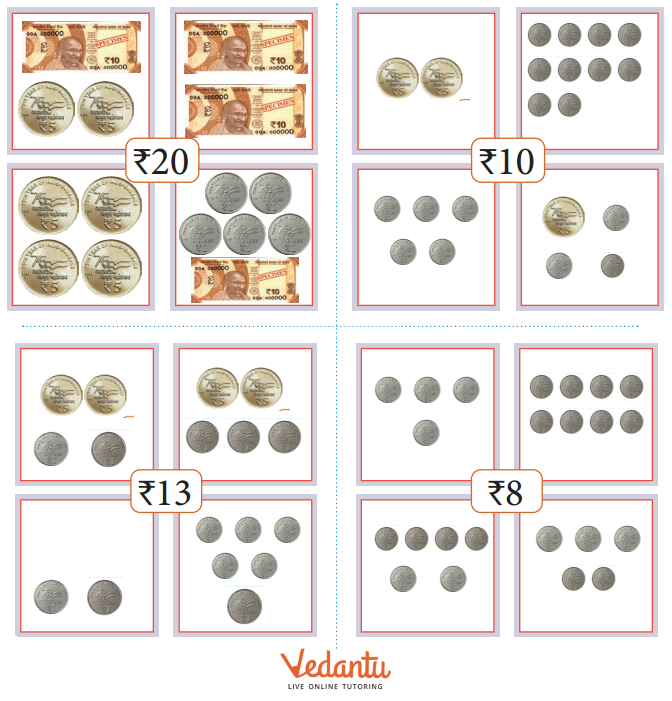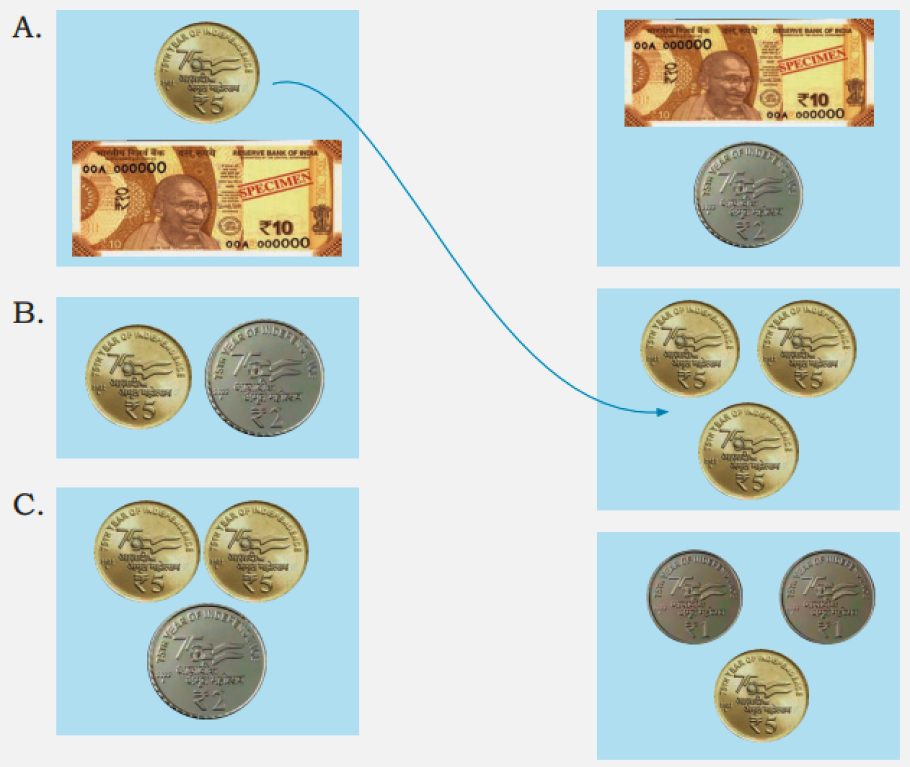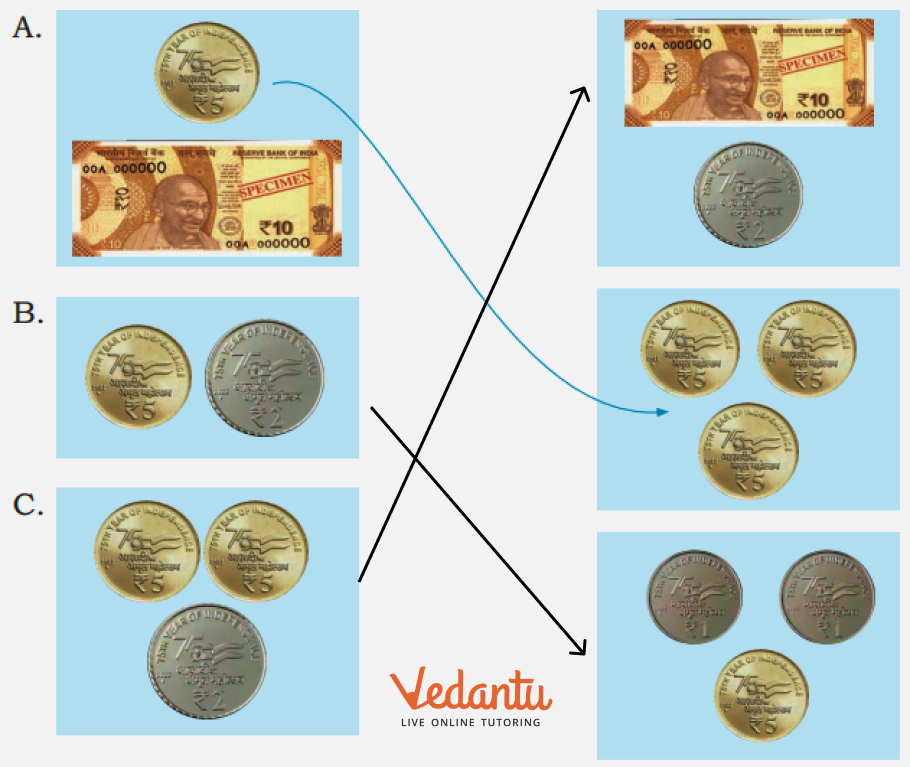NCERT Solutions For Class 1 Maths Chapter 12 How Much Can We Spend? - 2025-26
FAQs on NCERT Solutions For Class 1 Maths Chapter 12 How Much Can We Spend? - 2025-26
1. How do these NCERT Solutions for Class 1 Maths Chapter 12 align with the latest CBSE syllabus for 2025-26?
These NCERT Solutions are fully aligned with the CBSE 2025-26 syllabus for Class 1 Maths. They provide correct, step-by-step answers for every question in the Chapter 12, 'How Much Can We Spend?', ensuring that students learn the approved methods for solving problems related to money.
2. What types of problems are solved in the NCERT Solutions for 'How Much Can We Spend'?
The solutions provide detailed methods for solving various types of problems found in the NCERT textbook, including:
- Identifying different Indian coins and notes.
- Calculating the total value of a collection of coins.
- Solving simple word problems involving addition and subtraction of money.
- Figuring out how much money is left after making a small purchase.
3. Why is it important to follow a step-by-step method when solving money problems in Class 1?
Following a step-by-step method, as shown in the NCERT Solutions, is crucial for a Class 1 student. It helps build a strong foundation by teaching them to first understand the problem, then identify the required operation (add or subtract), and finally perform the calculation accurately. This structured approach minimises confusion and prevents common calculation errors.
4. How do the solutions help a child apply the concept of money from Chapter 12 to real-life situations?
The NCERT Solutions are designed to bridge the gap between textbook problems and real life. By showing how to calculate the total cost of items or how much change one gets back, the solutions help children understand the basics of shopping and handling money. This practical application makes learning more meaningful and memorable.
5. What is a common mistake students make in this chapter, and how do the NCERT Solutions help prevent it?
A common mistake for young learners is confusing the values of different coins or making simple errors in subtraction when calculating change. The NCERT Solutions help prevent this by providing clear visual explanations and repeated practice on subtraction problems. Each step is broken down, reinforcing the correct method to find how much money is left after spending.
6. Besides identifying currency, what other mathematical skills are developed by using these NCERT Solutions?
While this chapter focuses on money, solving the problems using these solutions enhances several other core maths skills. These include:
- Reinforcing counting and number recognition.
- Improving basic addition and subtraction abilities.
- Developing early problem-solving and logical reasoning skills.
- Understanding the concept of value and comparison (more than/less than).
7. How do the NCERT Solutions make the concept of spending and saving easy for a Class 1 student?
The solutions simplify these concepts by using simple language and relatable examples from the textbook. Each problem is solved in a logical sequence that a child can easily follow. For instance, problems about buying small items clearly demonstrate the idea of 'spending' (money going away) and 'money left' (related to saving), making abstract financial concepts concrete and understandable.
8. How can parents best use the NCERT Solutions for Chapter 12 to support their child's learning?
Parents can use these solutions to guide their child through the textbook exercises and check their answers. They can also use the solved problems as a model to create similar, fun activities at home with real coins and notes. This helps reinforce the concepts of counting money and making simple transactions in a practical way.
































